 The “Conversion Optimization: Turning Quick Wins Into Winning Streaks” session at SMX Advanced focused on landing page and campaign optimization techniques for B2B, B2C, lead gen and more. Here is my recap.
The “Conversion Optimization: Turning Quick Wins Into Winning Streaks” session at SMX Advanced focused on landing page and campaign optimization techniques for B2B, B2C, lead gen and more. Here is my recap.

James Svoboda, WebRanking
James started off the session by taking us through the five keyword match types in Google AdWords. He said he sees different match types as different “windows” to queries. If you are using broad match, it is like looking through a kaleidoscope at a stained glass window reflected in a mirror. You are getting queries related to your keyword, but sometimes it’s a bit of a tenuous connection between your keyword and the search query.
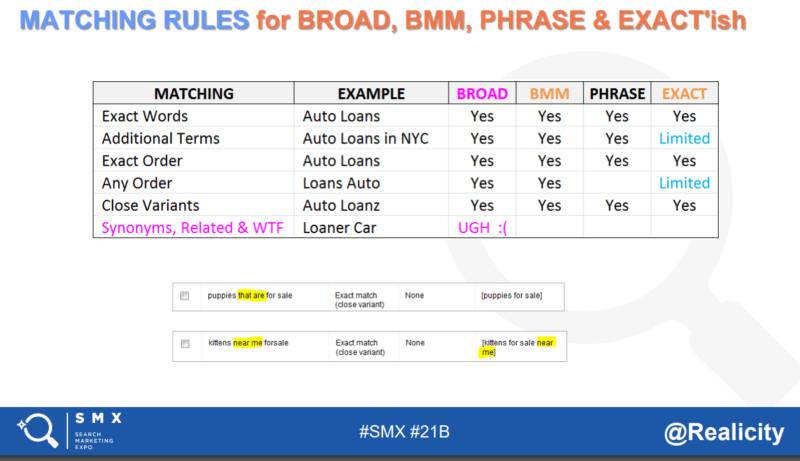
His agency focuses on using [exact] match and +fully +modified +broad (BMM) match. For BMM, all words are “modified” with +.
An example of a keyword phrase:
+mens +formal +shoes
would match
cheap men’s formal shoes in Miami.
The benefit of these two match types is that it gives the advertiser a lot of control in their campaign. There are times to use other match types, including query discovery, like when there is a low search volume and when word order matters. For example, in the case of ‘ drug-free’ versus ‘free drugs,’ you can see why the order is important.
Three to five words in a keyword phrase offers the most control and intent for the search volume. If the keyword is too long, there’s not enough volume.
Account structures and bidding
Set up your ad groups based on the conversion value/cost, so you don’t overpay. He went into several different examples of how to look at ad groups, conversion value and bidding.
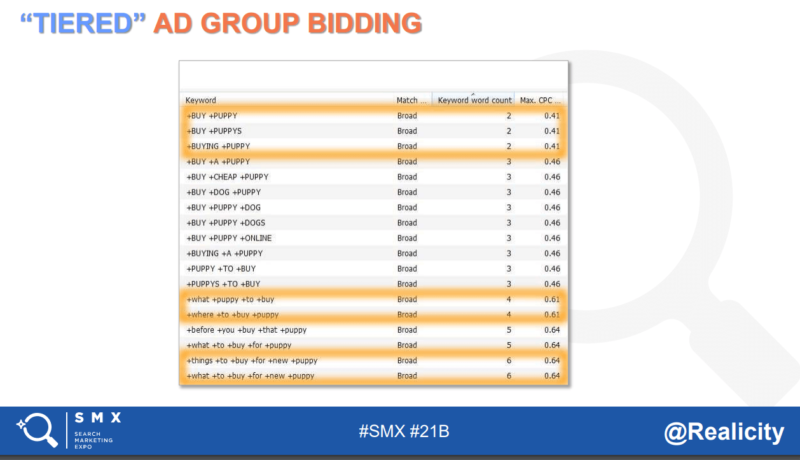
Set keyword bid levels
James covered a variety of ways to group ad groups and keywords for bidding purposes:
- Dayparting. Look at days of the week, then hours of the day. Go to custom reports and pull out the information. You’re looking for segments that have similar performance to each other.
- Demographics. The new AdWords user interface has a demographics tab that helps look at various demographics for a particular keyword. You have one demographic of men, and you write the ads for men’s dress socks, even though the search query is a broader search for socks.
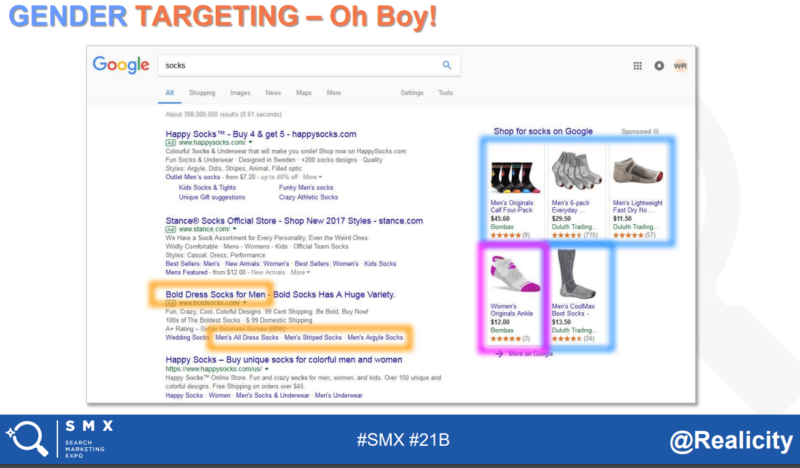
Geography. You can combine narrow geographic targeting with broader keyword targeting and narrower keyword targeting with a wider geographic area. A lawyer might target just the Portland, Oregon, metro area for the broader keyword of ‘lawyer’ but target the states surrounding Oregon with a narrower keyword of Portland lawyer.
Presentation deck: The 4 Hour Paid Search Analysis and Optimization Guide
Ayat Shukairy, Invesp
Ayat started her presentation by suggesting you start with simple questions; if you don’t, things can get too complicated, and you just give up.
The case studies you see about getting twice the conversions for changing a button color or selling out your inventory based on half an hour of changes are outliers. You could make a small change and get a big impact, but it’s not very common.
Taking a methodical approach to your conversion rate optimization (CRO), her company uses the acronym SHIP: Scrutinize, Hypothesize, Implement and Propagate.

The goal is to go beyond the regular testing; you want growth to happen. Work to where you can delight your visitors. How do you delight your visitors? Start by testing. Fix the user interface so the users can do their tasks. Collaborate with the other teams.
Problems with traditional CRO
CRO is not changing the color of your call to action. You need to understand the problems your customers have and create an experiment to solve their problems. You need to follow a process (such as the SHIP method), but understand there are no universal best practices.
Your testing should lead to repeatable, sustainable growth. A small, consistent increase in your conversion is what’s important in the long run.
Wrong VOC collection
Traditional voice of the customer (VOC) methods look at what customers do or say, and some of what they haven’t said. The company may not also be able to ask customers the right question, and they can’t get at the subconscious concerns the customers may have and not be able to express. The company may not be able to fix the complaints, but it can fix some of the underlying issues that were not explicitly said.
One famous example of fixing an underlying issue is how people think of their experience riding an elevator. In a hotel, guests were complaining that there was a long wait time for the elevators. Without changing the speed of the elevators, complaints went down significantly after mirrors were installed in the waiting area. Why did the complaints go down? People spent time checking how they looked in the mirrors and didn’t notice the wait time.
Use qualitative research to help ask the right question and receive the right answers from your customers.
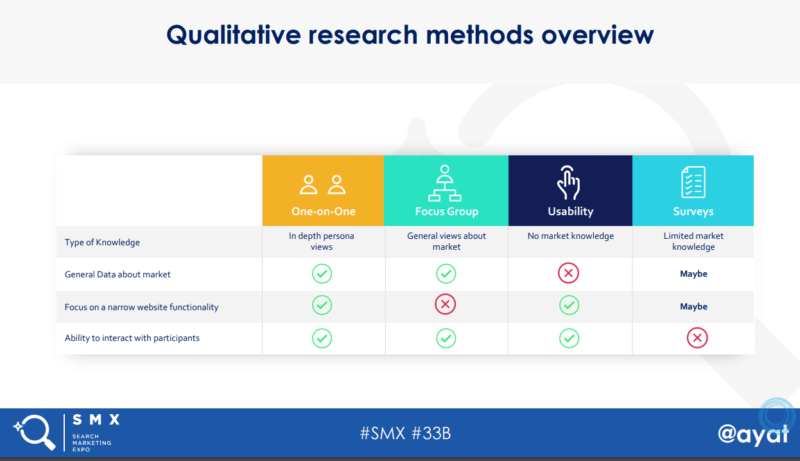
Steps to qualitative research
Need to solve a problem? Take these steps:
- Identify your goal.
- Identify your participants.
- Identify your personal bias.
- Don’t limit your research methods.
- Format questions correctly.
- Analyze data and propagate.
Poor job of prioritizing
Often, there’s a problem with prioritizing problems. The team works on the problem that the boss brings up, not the problem that needs to be addressed the most.
This separates problem identification from the possible solutions and uses 18 factors to weigh each line item. The priority is based on factors like impact (to the user and to the developers), how the problem was discovered, the location of the problem and so on. This model helps move from the personal opinion and subjective approach of conversion optimization to a data-driven and objective method of examination and prioritization.
Problems with testing
Testing is useful, but be aware that you can get false positives and false negatives. Before coming to conclusions, find out if you ran the test long enough and if there was enough data to reach statistical significance.
Before you start testing, develop a simple hypothesis that is testable. Here’s an example:
- Because we saw (data/feedback).
- We can expect that (change) will cause (impact).
- We’ll measure this using (data metric).
When you’re testing, measure the data involved and set aggressive goals. These are the basics of a lot of testing you already do: Get a baseline of observed behavior, estimate the impact of the change and measure the results.
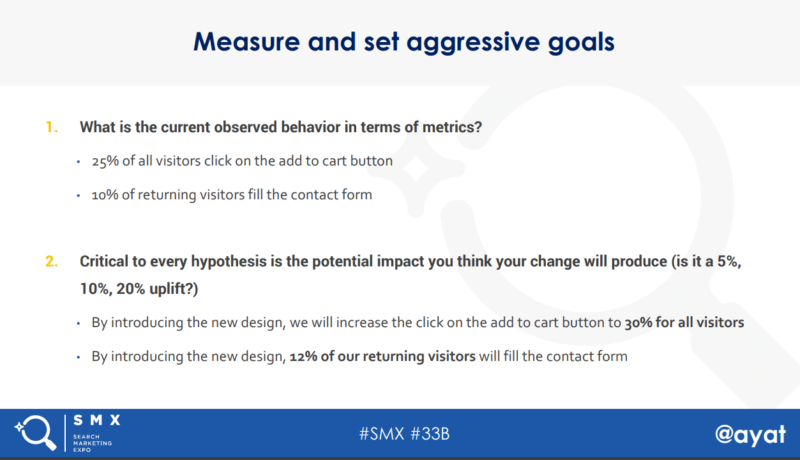
Presentation deck: Turning Quick Wins into Winning Streaks: Overcoming the Difficulties of CRO
Duane Brown, Take Some Risk Inc.
Last up was Duane. He started his presentation by talking about how to run conversion tests you haven’t been able to get approval for and offered three things to keep in mind as you try:
- Play into their hand.
- Recognize people are busy and be respectful of their time.
- Remember the boss wants to be right.
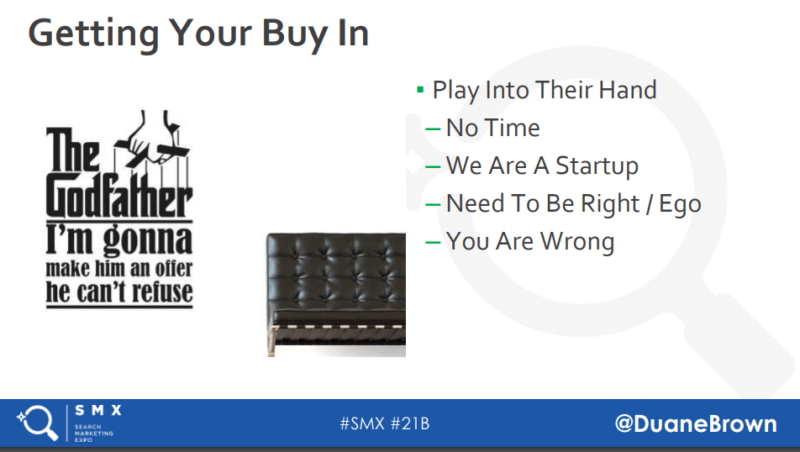
Ask if you can run “just one test,” and say you’ll shut up if it fails. Go with the surest win that you have.
A/B testing and CRO are not the same
In A/B testing, you’re testing the conversion rate, and your goal is to increase the conversion rate. In conversion rate optimization, you’re testing for a better customer experience and to get consumer insights, and you’re looking for a higher conversion rate, lifetime value or average order value.
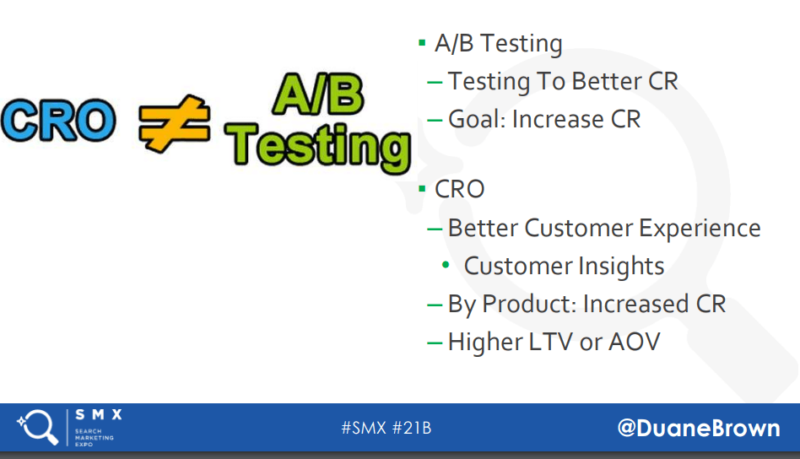
Four areas of testing
There are four areas of testing:
- Keywords.
- Advertising and messaging.
- Landing pages.
- Sites.
Google and Bing and their advertising programs are a good way to start testing your keywords. After you’ve tested keywords, a quick win is to make sure the message in your advertising actually matches up with your landing page.
Landing page optimization tips often include reducing the fields on your forms, simplifying the page and making it easy for the customer to turn into a lead. However, all the leads in the world won’t save you if none of them convert into paying customers.
If your leads aren’t converting and are just wasting your time, start doing some research. Talk to the sales reps, talk to tech support, find out what questions people are asking.
Adding friction
Think about adding “friction” to the landing page. Duane’s company does this. In one case they added a pricing grid and a short submission form in place of a single button. One of the form questions was, “Who is your ideal customer?”
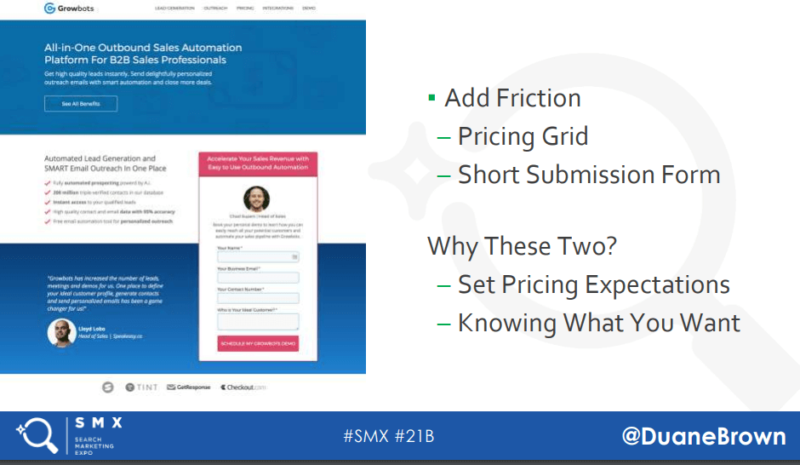
The questions helped the person (the “lead”) filling out the form know if the product was right for them, and the questions also helped the sales team know if the lead was a good fit for the product. They implemented this landing page, iterated based on their tests, and got large deals that blew away their previous deals in terms of price and quantity.
Shift your metric from the number of leads to the quality of leads.
You don’t always have to be right, but you do need to move the business in the right direction by standing up for your customers. Remember that each click has a human behind it.
Presentation deck: A/B Testing and CRO: What Everyone Should Learn From My 6 Years
Opinions expressed in this article are those of the guest author and not necessarily Search Engine Land. Staff authors are listed here.
